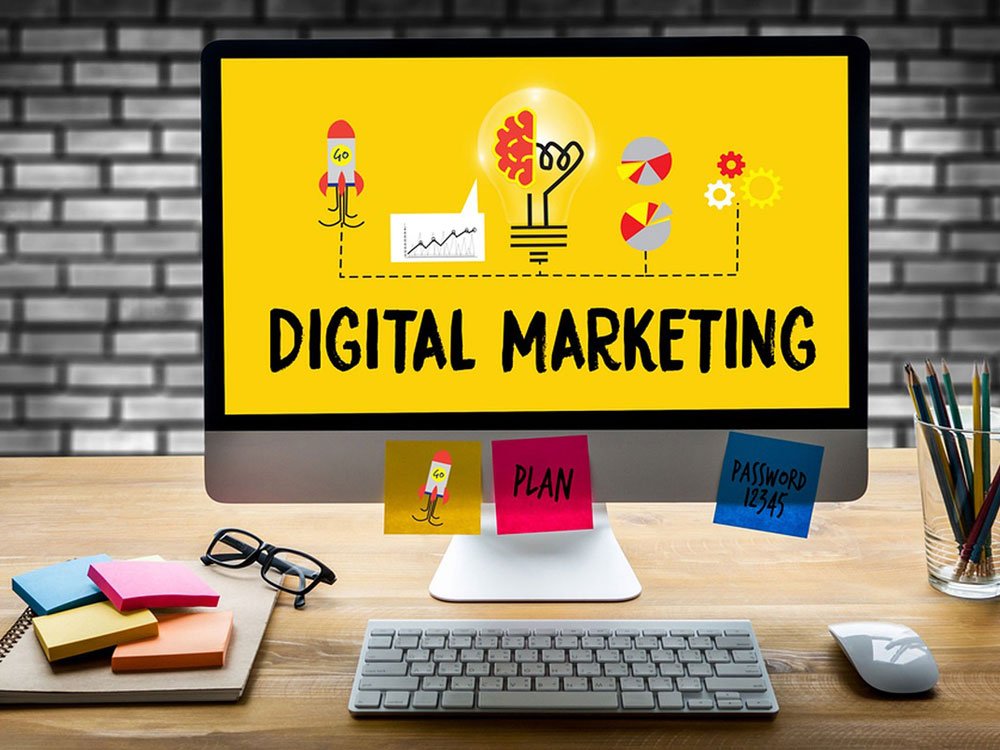
How can businesses effectively measure the ROI of their digital marketing campaigns?
March 21, 2024 | Digital Techtune
Measuring the return on investment (ROI) of digital marketing campaigns is paramount for businesses seeking to allocate resources efficiently, optimize strategies, and maximize revenue generation. In today’s digital age, where various platforms and channels abound, assessing the effectiveness of marketing efforts is complex yet essential. This comprehensive guide will delve into the intricacies of measuring digital marketing ROI, exploring methodologies, tools, and best practices to help businesses derive meaningful insights and make informed decisions.
Introduction
In an increasingly digitized marketplace, businesses are investing heavily in digital marketing to enhance brand visibility, engage with target audiences, and drive conversions. However, without a clear understanding of the ROI generated by these endeavors, it’s challenging to justify expenditures and gauge performance accurately. Unlike traditional marketing methods, digital marketing offers a wealth of data and analytics that can be leveraged to quantify ROI more precisely.
Defining ROI in Digital Marketing
ROI, in the context of digital marketing, refers to the ratio of net profit generated from a specific campaign or initiative relative to the investment made. It encompasses various metrics, including but not limited to:
- Revenue: Total sales attributed to the marketing campaign.
- Costs: Expenses associated with campaign execution, such as advertising spend, content creation, and software subscriptions.
- Conversions: Desired actions taken by users, such as making a purchase, filling out a form, or subscribing to a newsletter.
- Customer Lifetime Value (CLV): Predicted revenue generated from a customer throughout their relationship with the business.
- Customer Acquisition Cost (CAC): The cost incurred to acquire a new customer, typically calculated by dividing total marketing expenses by the number of new customers acquired.
Methodologies for Measuring Digital Marketing ROI
1. Attribution Modeling
Attribution modeling involves assigning credit to various touchpoints along the customer journey to understand which channels and interactions contribute most significantly to conversions. Common attribution models include:
- First-click attribution: Credits the first touchpoint a user interacts with before converting.
- Last-click attribution: Attributes all credit for a conversion to the final touchpoint before conversion.
- Linear attribution: Distributes credit equally across all touchpoints in the customer journey.
- Time-decay attribution: Assigns more credit to touchpoints closer to the conversion event.
2. Marketing Mix Modeling (MMM)
MMM is a statistical analysis technique that evaluates the impact of various marketing channels and factors on overall sales. It involves analyzing historical data to quantify the relationship between marketing inputs (e.g., advertising spend, promotional activities) and outputs (e.g., sales revenue). MMM helps businesses optimize resource allocation across different marketing channels based on their respective ROI contributions.
3. Customer Lifetime Value (CLV) Calculation
CLV estimates the total value a customer is expected to generate for the business over their entire relationship. By understanding the long-term revenue potential of customers acquired through digital marketing efforts, businesses can assess the ROI of their campaigns more accurately and tailor strategies to maximize CLV.
4. Multi-Touch Attribution (MTA)
MTA assigns fractional credit to multiple touchpoints across the customer journey, acknowledging the cumulative impact of various marketing interactions. By analyzing data from multiple channels and touchpoints, MTA provides insights into how different marketing efforts contribute to conversions and allows for more nuanced ROI measurement.
5. Return on Ad Spend (ROAS)
ROAS calculates the revenue generated for every dollar spent on advertising. It provides a straightforward metric for evaluating the efficiency and effectiveness of ad campaigns across different platforms and channels. ROAS can be calculated by dividing revenue generated from ads by the total advertising spend.
Key Performance Indicators (KPIs) for Measuring Digital Marketing ROI
1. Conversion Rate
The conversion rate measures the percentage of website visitors who complete a desired action, such as making a purchase or filling out a form. Monitoring conversion rates allows businesses to assess the effectiveness of their digital marketing campaigns in driving user engagement and ultimately, conversions.
2. Cost per Acquisition (CPA)
CPA quantifies the cost incurred to acquire a new customer through digital marketing efforts. By dividing total campaign expenses by the number of new customers acquired, businesses can evaluate the efficiency of their customer acquisition strategies and optimize resource allocation accordingly.
3. Click-Through Rate (CTR)
CTR indicates the percentage of users who click on an ad or promotional link relative to the total number of impressions. A high CTR suggests that the ad resonates with the target audience and effectively captures their attention, while a low CTR may indicate a need for optimization or refinement of the ad creative and messaging.
4. Return on Investment (ROI)
ROI measures the profitability of digital marketing campaigns by comparing the revenue generated to the cost of investment. It provides a holistic assessment of campaign performance and helps businesses gauge the overall effectiveness of their marketing strategies in driving revenue and achieving business objectives.
5. Customer Lifetime Value (CLV)
CLV estimates the long-term value of a customer to the business, taking into account factors such as repeat purchases, loyalty, and referrals. By understanding the lifetime revenue potential of customers acquired through digital channels, businesses can optimize marketing efforts to maximize CLV and overall profitability.
Tools for Measuring Digital Marketing ROI
1. Google Analytics
Google Analytics is a powerful web analytics platform that provides comprehensive insights into website traffic, user behavior, and conversion metrics. It allows businesses to track the performance of digital marketing campaigns, analyze audience demographics, and measure key metrics such as conversion rate and ROI.
2. Marketing Automation Platforms
Marketing automation platforms like HubSpot, Marketo, and Salesforce enable businesses to streamline campaign management, automate repetitive tasks, and track the effectiveness of marketing initiatives. These platforms offer robust analytics and reporting features that facilitate ROI measurement and optimization of marketing strategies.
3. Customer Relationship Management (CRM) Software
CRM software such as Salesforce, Zoho CRM, and Microsoft Dynamics CRM centralize customer data, interactions, and transactions, providing valuable insights into customer behavior and preferences. By integrating CRM data with digital marketing analytics, businesses can gain a holistic view of the customer journey and measure the impact of marketing campaigns on customer acquisition and retention.
4. Social Media Analytics Tools
Social media analytics tools like Sprout Social, Hootsuite, and Buffer offer comprehensive analytics dashboards that track engagement metrics, audience demographics, and campaign performance across various social media platforms. These tools enable businesses to measure the ROI of social media marketing efforts and optimize content strategies based on audience insights.
5. Attribution and Multi-Touch Attribution Platforms
Attribution and multi-touch attribution platforms such as Google Attribution, Adobe Analytics, and Bizible help businesses analyze the impact of different marketing touchpoints on conversions and revenue generation. These platforms use advanced algorithms and data modeling techniques to provide actionable insights into the effectiveness of marketing channels and campaigns.
Best Practices for Optimizing Digital Marketing ROI Measurement
1. Set Clear Goals and KPIs
Before launching digital marketing campaigns, define clear objectives and key performance indicators (KPIs) aligned with your business goals. Whether it’s increasing website traffic, driving conversions, or boosting revenue, establishing measurable targets will enable you to track progress and assess ROI effectively.
2. Implement Proper Tracking and Attribution
Utilize tracking pixels, UTM parameters, and conversion tracking tags to monitor user interactions across different digital channels accurately. Implement robust attribution models to attribute conversions and revenue to the appropriate marketing touchpoints, providing insights into the effectiveness of each channel and campaign.
